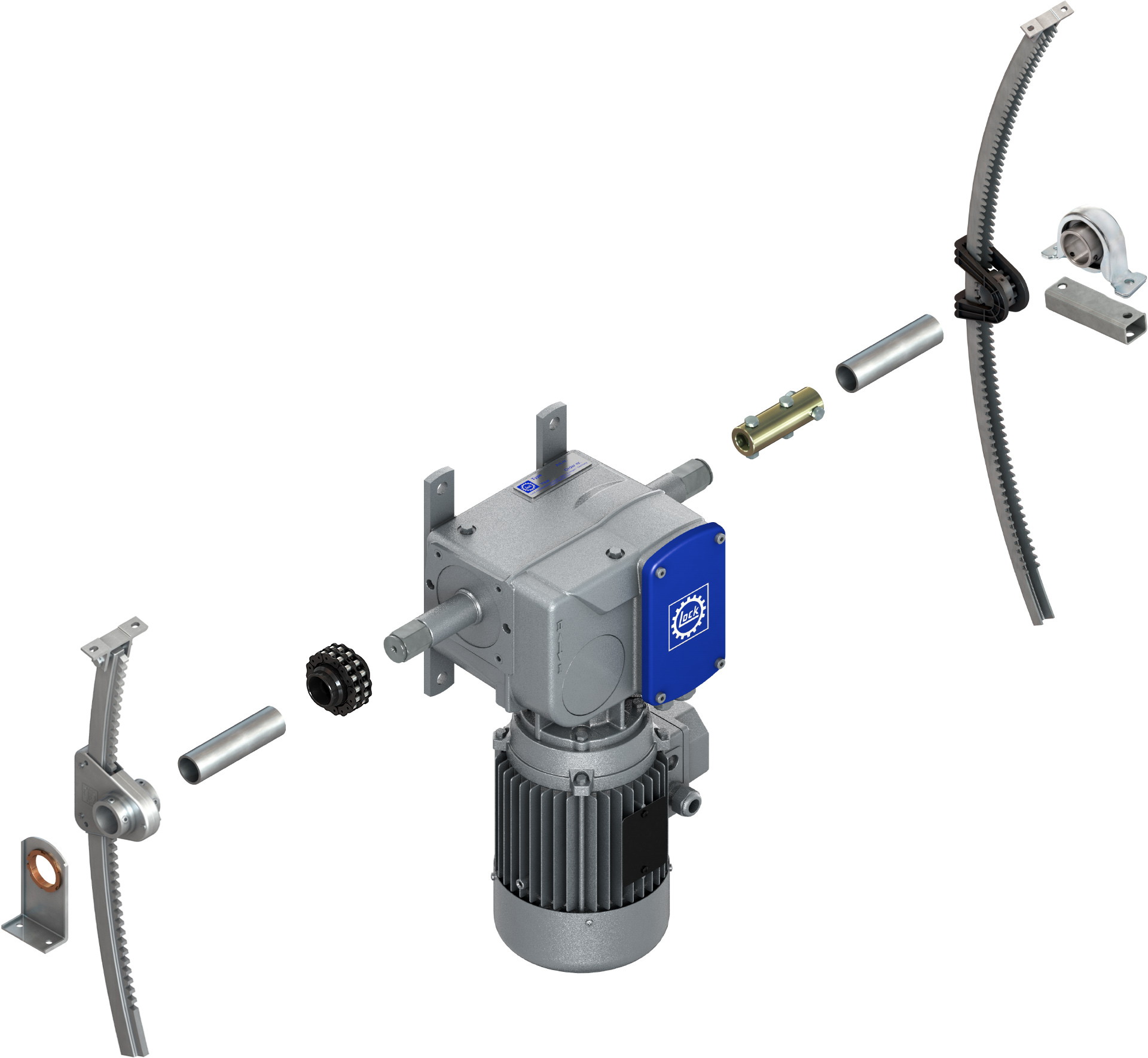Anyone who decides on roof ventilation can choose between different types. The selection depends on the personal requirements and wishes of each farmer and the local climatic conditions. In addition to wide span ventilation, lifting ridge ventilation, sliding ridge ventilation and MX ventilation are also common.
Wide-span ventilation
Wide-span ventilation is a full-length ridge ventilation. Flaps can be controlled manually or automatically to enable effective ventilation. The advantage of wide-span ventilation is its ability to ensure even air circulation throughout the barn. This is particularly important to minimize temperature differences and create a consistent climate for the animals.
Lifting ridge ventilation
The lifting hood is adjusted using racks and a centrally mounted drive tube and our drive systems. The lifting ridge with light area on both sides offers optimal ventilation by opening at the highest point of the stable. Nevertheless, the cover ensures protection from rain. In extreme weather conditions, the cover can be lowered using the drive train and racks.
MX ventilation
This type of ridge ventilation acts as an outstanding ventilation system that offers optimal performance in a wide range of weather conditions. With the variable opening width, the chimney effect enables efficient air exchange regardless of the prevailing wind and weather conditions. Even in intense sunlight, heat build-up, which can occur with conventional systems, is avoided. In extreme weather conditions, it is possible to close the ridge completely. The half ridge hood of the ventilation system is particularly suitable for conversion and extension solutions as well as for ventilation above milking parlors and calf pens. This flexibility makes the ventilation ridge a versatile and efficient choice for agricultural applications and specific areas of use.
Sliding ridge ventilation
This form of ventilation is available with one-sided or two-sided opening and has the largest ventilation opening of all light-air ridges. The rack and pinion system allows the ridge to be moved into different positions on one side to ventilate the stable.
Ideally, the opening should face in the opposite direction to the main wind direction and be generously dimensioned so that the sliding ridge has a ventilation and lighting effect. The two halves of the roof should overlap generously so that drifting snow and driving rain do not cause problems in the stable. Depending on the geographical location of the stable, it may be necessary to close the opening with a coarse-pored wind protection net.

